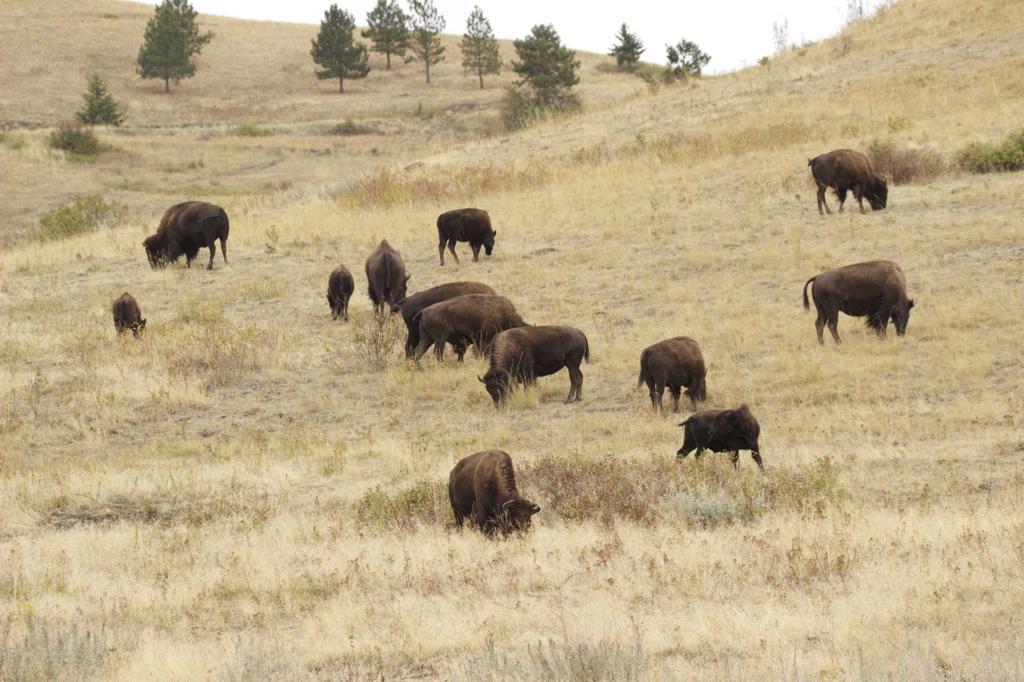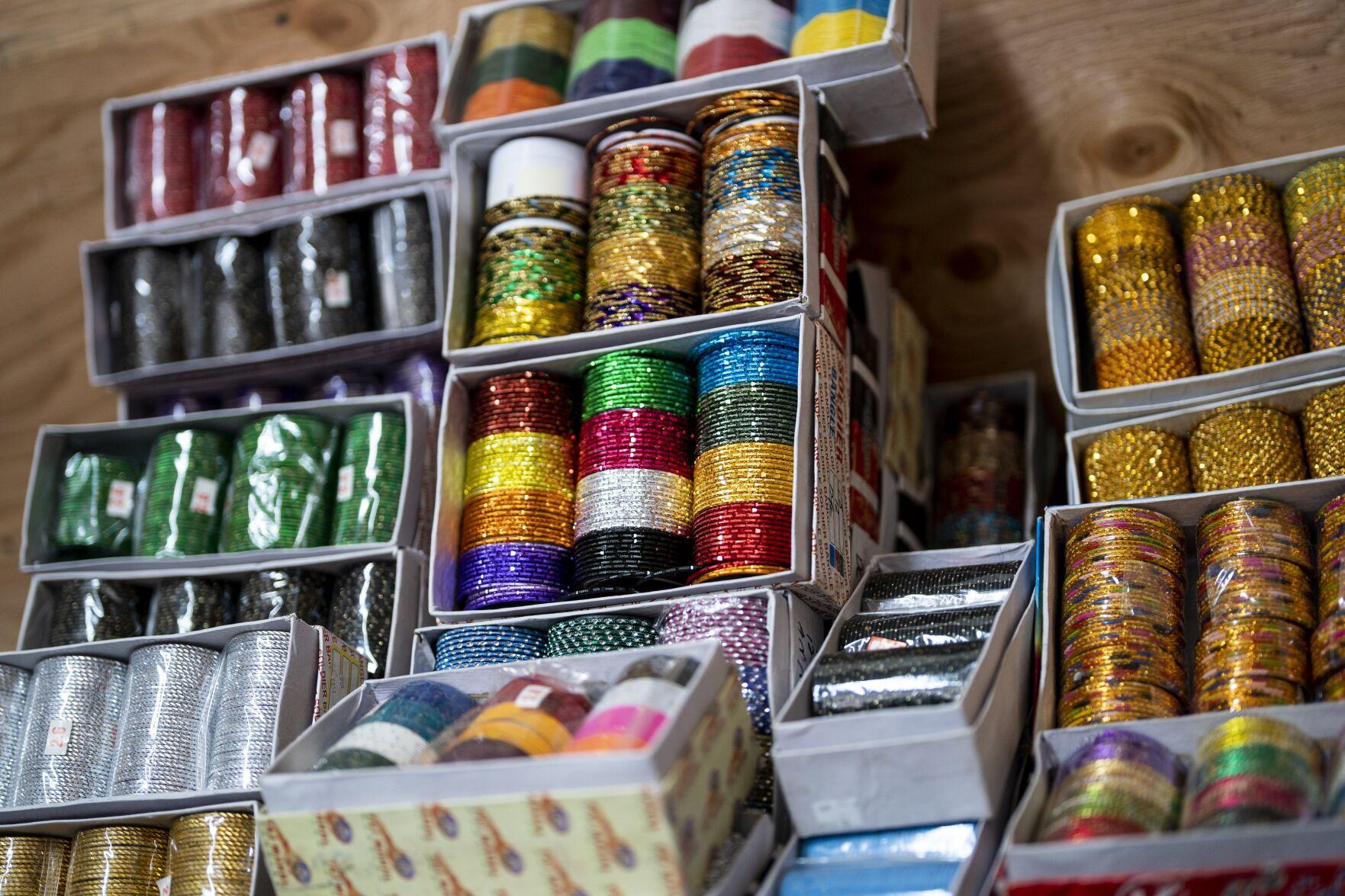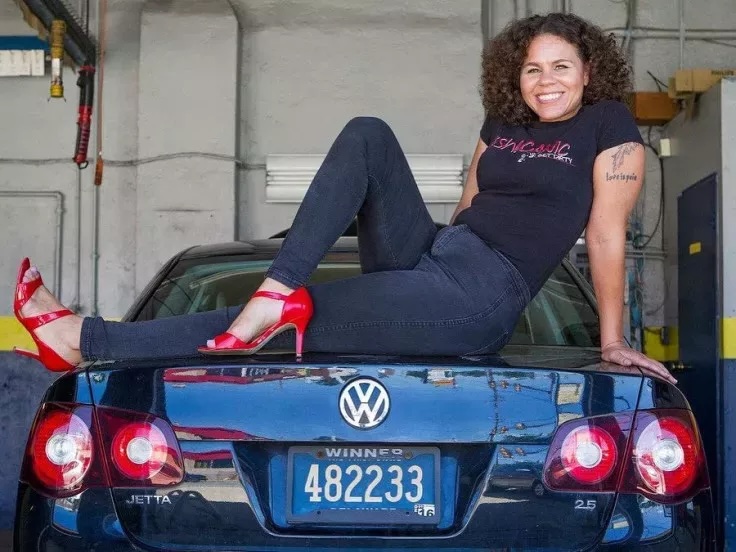
Living
National Bison Range Officially Becomes Part of Flathead Indian Reservation
It’s official! Effective January 15, 2021, National Bison Range is owned by the Bureau of Indian Affairs (BIA).
The land has become a part of the Confederated Salish and Kootenai Tribes (CSKT) following an authorized historical process involving the US and Indian bureaucrats.
The CSKT is a part of Montana’s Flathead Indian Reservation, which lies west of the state along the river, which bears the same name.
It is home to multiple tribes, encompassing the Bitterroot Salish and the Kootenai, known for being diverse. Scores of people visit the reservations to partake of its wildlife and bask in the lush greenery.
The recent property transfer was enabled by the United States Fish and Wildlife Service in association with the Land Management Bureau.
In what was deemed a smooth transition of ownership David L. Bernhardt, who had reached the climax of his tenure as Secretary of the United States Department of the Interior, affixed his signature to the transfer order.
Order 3390 states that the land belongs to the Indian Affairs Bureau, with restoration slated to get underway immediately.
Head of the CSKT, Shelly Fyant, underscored the value of the US authorities’ move to correct a situation that occurred many years ago, forcing the land’s separation.
Ms. Fyant notes that the move is nothing short of historic and will lead to its continued preservation.
She adds that it was a lot of hard work that was put into accomplishing this major feat, emphasizing that both ranges were separated more than a century ago, twenty-five of which were spent attempting to manage the Fish and Wildlife Center there jointly.
She believes that the original dwellers will significantly benefit from the historic move that relied on the Buffalo for so many years.
It was through Public Law No. 116-260 that the transition was made possible by.
It was four days before the end of the year that the law came into effect; a welcoming new year’s gift for the Indian Bureau.
That same month, Congress abolished the Law that established the National Bison Range and moved ahead with the process to return the land of the National Bison Range held in protection by the United States for the benefit of the Confederated Salish and Kootenai Tribes.
The law also established a two-year transition period during which Congress gave directives to the Secretary of the Interior via the FWS to be in one accord with the Tribes in transition operations. The tribes assumed complete control of the Bison Range.
Both the Service and the tribes will work for a seamless transition for the Bison, the wildlife, the staff, and the public.
In the meantime, scores of tourists have been flocking the area for years to see the many natural attractions, including species of animals not seen anywhere else.
Some attractions include “The People’s Center,” which, for thousands of years, the Salish, Pend d’Oreille, and Kootenai have occupied. These lands gradually became western Montana and the surrounding area.
The People’s Center tells the tales of these tribes via a museum, an exhibition space, educational programs, and a gift shop.
There’s also the Flathead Lake State Parks, the most vast freshwater lake in the West.
Areas of note on the lake comprise Wild Horse Island and several other spectacular state divisions on the reserve, including Finley Point and Yellow Bay.
Except for Wild Horse Island, all areas extend camping, fishing, boat rides and swimming excursions, and more.
Now that the territory has expanded, tourism will be an even more significant benefit to the Indian tribes with more to display.
Living
Biggest Sea Turtle Release Ever on Georgia’s Jekyll Island

In two days, Georgia will witness its largest sea turtle release ever on Jekyll Island. The Georgia Sea Turtle Center announced that over 30 turtles will be returned to the sea. These turtles come from various places like Turtles Fly Too, NOAA, Mystic Aquarium, New York Rescue Center, and New England Aquarium.
Many of these sea turtles needed help because they were cold-stunned, but now they are better and ready to go back to the ocean.
Sea turtles are fascinating creatures. They live in oceans around the world and are known for their long migrations. Some species travel thousands of miles to lay their eggs on the same beaches where they were born. They are also ancient animals, having been around for over 100 million years, which means they shared the planet with dinosaurs.
Sea turtles like to eat a variety of foods. Depending on the species, their diet can include jellyfish, seaweed, crabs, shrimp, and even small fish. They have a unique way of navigating the ocean, using the Earth’s magnetic field to find their way.
Unfortunately, sea turtles face many challenges. They are threatened by habitat loss, pollution, climate change, and accidental capture in fishing gear. That’s why the work of rescue centers and rehabilitation programs is so important to help these vulnerable sea creatures survive and thrive in their natural habitat.
Living
Drones Are A Powerful Ally For Animal Right Campaigners

Drones have become powerful allies for animal rights campaigners, offering a bird’s-eye view that’s hard to beat. These flying gadgets are not only affordable but also simple to operate, making them perfect for keeping an eye on illegal activities like fishing, hunting, and deforestation. They’re also great for monitoring conditions in zoos and aquariums.
A striking example comes from UrgentSeas, an organization that sprang into action after hearing about a lonely manatee at the Miami Seaquarium. Using drones, they captured footage of the manatee, named Romeo, in a neglected pool. The video went viral, leading to public outrage and eventually the relocation of Romeo and his mate Juliet to a sanctuary.
Since their introduction in the early 2010s, drones have been revolutionary for groups like PETA, who’ve used them to uncover illegal hunting activities. In marine conservation, drones offer an unparalleled view of the living conditions of sea creatures, highlighting the cramped spaces in some facilities.
Sea Shepherd, a marine conservation group, utilizes drones to document illegal fishing activities in international waters. The advancements in drone technology have made these devices quieter and more discreet, crucial for documenting illegal actions without alerting the perpetrators. Simon Ager of Sea Shepherd emphasizes the effectiveness of drones in these operations, noting their ability to capture evidence of illegal activities from a safe distance, thus reducing the risk to conservationists.
In essence, drones are more than just tools; they represent a shift in how activists and conservationists can safely and effectively gather evidence, raise awareness, and prompt action to protect animals and their habitats. They enable discreet observations and can reach places that are otherwise inaccessible or risky for humans, proving to be an indispensable asset in the fight for animal rights and environmental protection.
Living
New Bazaar Blends American & Indian Cultures

In Buffalo’s East side, something exciting is happening at the Buffalo Trade Center! It’s becoming a bustling market, blending Indian and American cultures, thanks to Samad, a visionary with Indian roots but raised in the U.S. This new market isn’t just any ordinary place; it’s a vibrant bazaar with 30 vendor stalls, offering a sneak peek into a future filled with shops, a halal supermarket, offices, a playground for kids, a restaurant, a food hall, and a community center.
Samad, together with his uncles Khaled Ali, Iqbal Ali, Moynul Samad, and Faisal Ahmed, owns this center. They’re embarking on an ambitious project, starting with the vendor stalls and a retail liquidation center, all set to open this summer. But the excitement has already begun with a pop-up vendor festival, especially timed for Ramadan, attracting thousands of people and giving a taste of what’s to come.
This market is more than just a place to shop; it’s a springboard for aspiring business owners. Samad’s idea is to create a space where anyone with a dream can start their business journey with minimal initial costs and supportive surroundings. Last year, this place drew in 5,000 visitors, and it’s clear it has a special vibe that people love.
Samad’s vision extends beyond business. He aims to build a community that reflects the diversity and inclusivity of Buffalo itself. He’s looking for vendors who are not only entrepreneurial but also kind and welcoming to everyone, reinforcing that the Buffalo Trade Center is a place for all, not just for the Bangladeshi community.
Through Samad’s efforts, the Buffalo Trade Center is set to be a hub where different cultures meet and mingle, proving that despite our diverse backgrounds, we share more similarities than differences. This market is shaping up to be a place where community, culture, and commerce come together beautifully.
Living
Eagle Rescue: Maryland Officer Saves Bald Eagle Trapped in Car Grille

In Calvert County, Maryland, a bald eagle had a close call after it got trapped in the front grille of an SUV. This unusual rescue story started when a driver hit the eagle on Route 4 last weekend. Despite the scary collision, the eagle survived, but its legs were caught in the car’s grille.
The driver quickly called for help, and Animal Control Officer Hannah Neel rushed to the scene. With her background as an emergency veterinary technician, Officer Neel was well-prepared to help the eagle. She even contacted a local veterinary hospital right away, just in case the bird needed immediate medical care.
When Officer Neel arrived, she found that, thankfully, the eagle wasn’t hurt. She carefully checked the eagle to make sure it wasn’t showing any signs of injury or illness. Neel found that the eagle could move all its legs and was responding normally, which was a good sign.
With help from the Calvert County Sheriff’s Office and the driver’s permission, Officer Neel managed to free the eagle from the grille. After making sure the eagle was okay, she released it back into the woods, where it could fly free again.
Julie Yingling, a county spokesperson, praised the teamwork that led to the eagle’s safe rescue. She expressed gratitude for the community’s support and concern for the eagle, as well as for everyone involved in the rescue effort.
This incident shows how quick action and collaboration can lead to a happy ending, even in unexpected situations like an eagle getting stuck in a car grille. Thanks to Officer Neel and the team’s efforts, the bald eagle was able to return to the wild, safe and sound.
Living
Girls Auto Clinic: Empowering Women One Car at a Time

Imagine going to get your car fixed and getting a free manicure or pedicure while you wait. Sounds too good to be true? Not at Girls Auto Clinic in Upper Darby, PA! This unique auto repair shop is run entirely by women and has become famous for its trustworthiness and extra perks like manis and pedis for customers.
The auto repair industry has been mostly male-dominated, with women making up just 12% of the workforce. But Girls Auto Clinic is changing that. Patrice Banks, the founder, was once an engineer who felt intimidated by traditional repair shops. She said, “I was tired of feeling helpless and having to go talk to a guy. I was afraid I was going to be taken advantage of.” So, she decided to make a change.
While still working at DuPont, Banks began teaching herself car mechanics. She realized that finding a female mechanic was tough, so she took matters into her own hands. She enrolled in a night school for mechanics, where she was the only woman among younger male students. Banks eventually left her high-paying job to dive fully into the world of auto repair, gaining experience by working in garages around Philadelphia.
At Girls Auto Clinic, not only do customers get their cars fixed, but they also enjoy free manicures or pedicures. Banks got the idea from her own experiences. “Me and my girlfriend would go to a Jiffy Lube next to a nail salon on our lunch break, get our oil changed, and then get our nails done,” she recalls. This efficient and enjoyable routine inspired her to offer similar services at her own auto clinic.
Banks emphasizes the importance of empowering women to understand their vehicles better. She believes in teaching customers about their cars to help them feel more confident and knowledgeable. “Mechanics do a lot of diagnosing from hearing, seeing, feeling, and smelling. So if we can hear, see, feel, and smell it, so can you,” Banks explains.
Girls Auto Clinic isn’t just an auto repair shop; it’s a place where women can feel comfortable, understood, and empowered. With its unique blend of automotive services and beauty treatments, Girls Auto Clinic is redefining the auto repair experience and proving that women can excel in this field.
-

 OMG6 years ago
OMG6 years agoA Couple Gave Birth to the Most Beautiful Twins Ever
-

 OMG6 years ago
OMG6 years ago20 Rare Historical Photos
-

 OMG6 years ago
OMG6 years agoHilarious Airport Photos
-

 Cute5 years ago
Cute5 years agoMom Refuses to Let Daughter Eat Sugar and Years Later This is What She Grows Into
-

 OMG5 years ago
OMG5 years agoTop Secret Air Force One Facts That You Never Knew
-
OMG5 years ago
The Funniest Yearbook Photos Of All Time
-

 OMG6 years ago
OMG6 years agoRetired Mathematician Restores Log Cabin
-

 OMG4 years ago
OMG4 years agoWhat Happened When This ‘Duck Dynasty’ Legend Chopped Off His Beard?